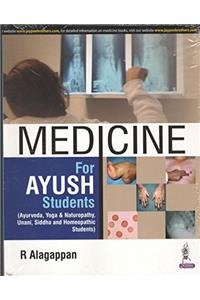Only logged in customers who have purchased this product may leave a review.
Sale!
Critique Of Poetics ( Vol. 1 ) (Hardcover) | Released: 2005
By: A.R. Biswas (Author) Publisher: Atlantic33.00% Off Original price was: ₹550.00.₹369.00Current price is: ₹369.00.
You save ₹181.00
Poetry and Poetics are integrally related. The former is an art based on emotions, whereas the latter is a science evaluating poetry. So long their common mode of treatment has been to excite in the mind the emotions appropriate to the subject-matter. But science and art are not identical. The... Read More
In stock
Ships within 1-2 Business Days

100% Orginal Books

Easy Replacement

Certified product

Secure Checkout

On time delivery
About The Book
Poetry and Poetics are integrally related. The former is an art based on emotions, whereas the latter is a science evaluating poetry. So long their common mode of treatment has been to excite in the mind the emotions appropriate to the subject-matter. But science and art are not identical. The former uses the discursive mode; and the latter the presentational mode. While science is truth, the art is adjectively true, i.e. it does not conflict with the truth.
The book Critique of Poetics is an extremely bold and far reaching attempt at a comprehensive theory of poetry. It starts with a Sound-Sense Continuum and ends with Quantum Poetics. The path of evolution is marked by the poetic process, the flow of Rasa, the flight of Pegasus, the dance of Resonons, the doctrine of suggestion, Rx for rhetoric, the logic of signs and symbols, the poetic imagery, the miracle of communication, the concept of criticism, style and stylistics, the law of inspiration and catharsis, the limits of art, the philosophy of beauty, East and West in Poetics, and the theory of literature. And this has been treated in a global perspective, which harmonizes both East and West in Poetics. A balance has also been struck between the two approaches to the study of literatureExtrinsic and Intrinsic. The former is characterized by psychology-society and other arts whereas the latter by style and stylistics, image and metaphor, rhetoric and suggestion, beauty and the like. A new theory of literature has been derived from these. This is born in a continuum of sound and sense, of space and time. It provides an organ of evaluating the past, present and future works of literature. In this context quantum poetics marks the end of the evolutionary process.
Table of Contents: 1. A Sound-sense Continuum; Language and statementSphotaOrdinary and poetic languageEast and WestSound and SenseDhvaniEquation of continuum Rasa auchitya Universe; 2. The Poetic Process; Poet, poem and realitySubject and object; Art and experienceCondensationAtomic theoryBilinear transformationPoetic process and illumination; 3. The Flow of Rasa; Vakrokti and aucitya-rasa explained; Bharat and JamesVibhvaanubhva sancribhvaObjective correlative and psychophysicsMathematical formulation of rasa; 4. The Flight of Pegasus; The P-phenomenonGodPoet equation; A triadic relation of poet, reader and universePoetry of tensionPsychology of imaginationMathematical formulation; 5. The Dance of Resonons; The Freudian modelPhase space and brain modelThe cortical resonanceGenesis of a poemResonance frequencyPratibh, dhvani and vyanjanResonon analysed; 6. The Doctrine of Suggestion; Expression and representationAbhidh lakshman and VyanjanExpression, suppression and impressionSuggestion mathematically defined Poetic experience The context theorem of meaningThe triple point in a wordThe source of poetry; 7. Rx for Rhetoric; Fancy, imagination and visionThe three modes of the mindThe dialectics explained The poetic probabilityThe evolution of RhetoricFigures of speechThe alankr of Indian PoeticsRasa as a production function; 8. The Logic of Signs and Symbols; Phonemes, morphemes and tagmemesThe utterance co-ordinatesSigns and symbols Paninis symbolsCanons of symbolism Mathematics and meta-mathematicsThe Sanskrit OmSign-situation in mathematics; 9. The Poetic Imagery; Image and sensationThe brain as a transmitter and a transformerThe symbolic process analysedThe image-formationStrangeness in beautyThe abstract and the concreteThe poetic patternThe myth-making and metaphor Mathematical interpretationsThe image itself; 10. The Miracle of Communication; A subject-object relationIntensive manifold or in-scapeExperience and wordsDiction and RhythmThe discharge phenomenaAn equation of communicationThe objective correlative and the Indian Ntyastra Expression and transmissionMemory as a polyhedronThe structure of Chinese charactersNo difficulties of communication










Reviews
There are no reviews yet.